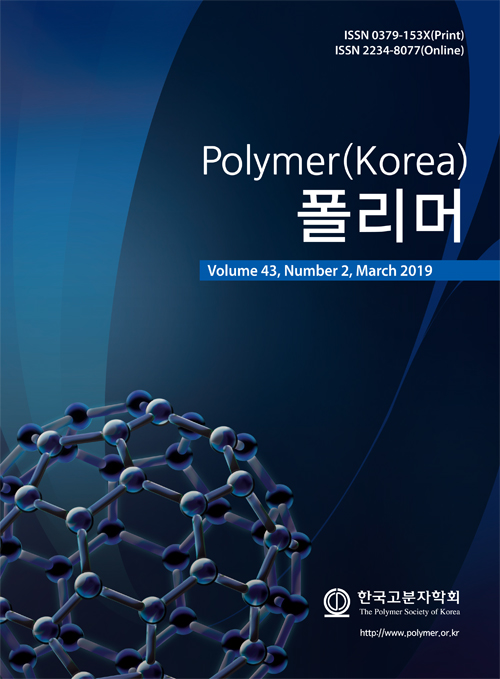In the case of nanoparticles containing polymer nanocomposite or in the form of thin film, they exhibit a unique crystallization behavior different from the bulk state. In this study, the crystallization behaviors of polymer matrix in the form of nanocomposite thin film, homogeneous thin film, and bulk polymer were analyzed by X-ray diffraction and various microscopy techniques. The crystallinity and the crystallization temperature decreased in the presence of hydrophilic nanoparticles with thinner film thickness. In addition, the formation of the spherurite structure was suppressed and the transition from the edge-on to the flat-on lamellar structure was strongly inhibited while hydrophobic nanoparticles had little effect on the crystallization behavior of the nanocomposite thin film. We believe that the results help to understand how the interactions between particles and matrix and confined geometry affect the crystallization of polymers and how they are utilized to design microstructures.
고분자가 박막 형태로 존재하거나 혹은 나노입자를 함유한 나노복합체의 경우 벌크 상태와는 다른 독특한 결정화 거동을 보인다. 본 연구에서는 벌크 상태와 박막 상태, 그리고 나노입자를 함유한 나노복합체 박막 형태의 고분자 매트릭스의 결정화 거동에 대한 분석이 X-선 회절, 다양한 현미경, 고속 시차주사열량계 등의 방법을 통해 수행되었다. 친수성 나노 입자가 존재하고 박막의 두께가 감소할수록 결정화도와 결정화 온도가 감소하였다. 또한 소수성 나노입자가 나노복합체 박막의 결정화 거동에 거의 영향을 끼치지 않는 것과는 달리 spherurite 구조의 형성이 억제되고 edge-on lamellar에서 flat-on lamellar 구조로의 층 상전이 현상 또한 강하게 억제되었다. 본 연구 결과는 입자와 매트릭스간 상호 작용 및 공간적 제한이 고분자 결정화에 어떻게 영향을 미치는지, 미세 구조 설계에 어떻게 사용되는지 이해하는 데 도움이 될 것이라 생각된다.
Keywords: polymer crystallization, thin film, nanocomposite, nanoparticle
- Polymer(Korea) 폴리머
- Frequency : Bimonthly(odd)
ISSN 0379-153X(Print)
ISSN 2234-8077(Online)
Abbr. Polym. Korea - 2023 Impact Factor : 0.4
- Indexed in SCIE
 This Article
This Article
-
2019; 43(2): 224-234
Published online Mar 25, 2019
- 10.7317/pk.2019.43.2.224
- Received on Oct 11, 2018
- Revised on Nov 20, 2018
- Accepted on Dec 23, 2018
 Correspondence to
Correspondence to
- Younghyun Cho
-
Department of Energy Systems, Soonchunhyang University, Asan 31538, Korea
- E-mail: yhcho@sch.ac.kr










 Copyright(c) The Polymer Society of Korea. All right reserved.
Copyright(c) The Polymer Society of Korea. All right reserved.